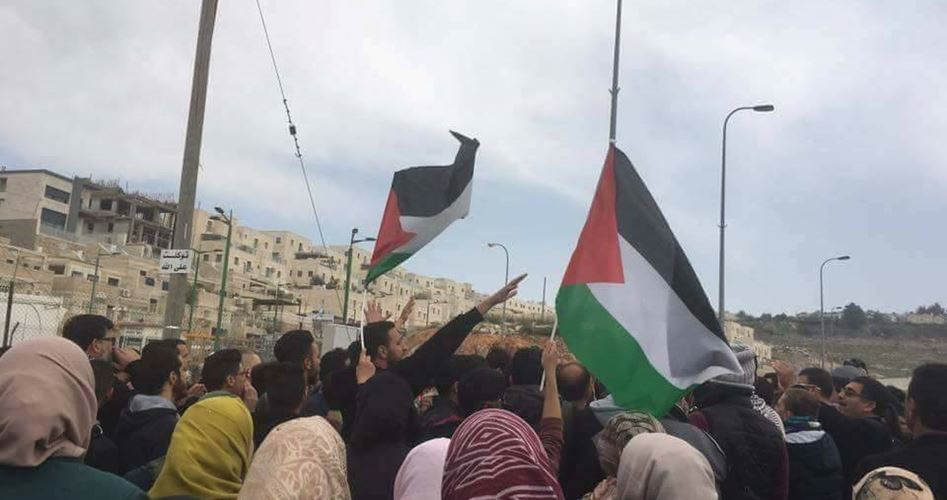Australia/Israel Review
Trump’s envoy found an anxious Ramallah
Mar 30, 2017 | Pinhas Inbari

Pinhas Inbari
US President Donald Trump’s Special Envoy, Jason Greenblatt, arrived in Israel on March 13, 2017, to meet Israeli Prime Minister Netanyahu and Palestinian Authority President Mahmoud Abbas and to sound them out on restarting peace negotiations.
His visit to Abbas’ presidential office, the Muqata’a, came amidst growing tension in Ramallah and even uncertainty about the very future of the Palestinian Authority.
The following report is based on conversations with senior Palestinian officials on the eve of the meetings in Jerusalem and Ramallah. The senior officials explained the main concerns currently facing the Palestinian leadership.
On the international level, sources in Ramallah fear that the United States and Russia are planning to draw new “Sykes-Picot” boundaries (the agreement whereby Britain and France first drew the Middle East borders in 1916), and Palestinian leaders are determined that Palestine be included in any new map. That is why they are so keen to collect as many commitments for a Palestinian state as possible, especially from pivotal states in Europe, the United States and Russia.
US President Trump’s telephone call on March 10 to Abbas was critical for the Palestinians because they had perceived indifference from the new administration on the Palestinian issue, and they fear being excluded in the “post-Sykes-Picot” plans.
That is why, according to the Palestinian sources, Abbas was so specific in the telephone call about his commitment to the two-state solution. On Sunday evening, March 12, Abbas told a Fatah audience in Ramallah that Trump confirmed the principle of a two-state solution. But, according to our sources, Trump did not react when Abbas mentioned the two-state solution. Trump’s ignoring of the principle of two states was noticed by the Ramallah leadership and created concern.
The joint statement by Prime Minister Netanyahu and Greenblatt in Jerusalem on March 13, 2017, also did not mention the principle of two states and referred to the Palestinian side as “Palestinians”, with no mention of a state or even the Palestinian Authority. Netanyahu and Greenblatt also gave preference to solving the problem within a regional and economic context.
As a result, press coverage in Ramallah’s Muqata’a was cancelled in anticipation of a difficult discourse between Abbas and the American envoy. By the way, Greenblatt’s title doesn’t bear any reference to the “Israeli-Palestinian” issue but rather emphasises “the region” – giving priority to Middle East regional issues.
Unrest in Ramallah
International slighting of the “Palestinian state” is not the only concern for the Palestinian Authority.
In recent weeks, Ramallah has not been safe. Violent demonstrations take place on a daily basis in protest against PA inaction after the killing of a Palestinian militant, Basel al-A’raj, by the IDF on March 6, inside the city of Ramallah.
The Palestinian Authority was very keen to avoid any demonstrations of any kind inside Ramallah, fearful of the “Tahrir Square” syndrome (i.e. Egyptian violence during the “Arab Spring” that led to the toppling of the Mubarak regime). But the killing of this wanted terrorist launched a series of demonstrations that Palestinian security forces were unable to quell.
Basel al-A’raj was a pharmacist from the Jerusalem-Bethlehem area who belonged to militant organisations. Al-A’raj was wanted by both Israeli and Palestinian security agencies, thereby creating the perception of security coordination between the two. Al-A’raj had spent many years in both Israeli and Palestinian jails.
The demonstrations after al-A’raj’s death focused on the Israeli-Palestinian security coordination and were directed at Maj. Gen. Majed Faraj, head of Palestinian security.
There are several actors active on the West Bank streets:
• NGOs, predominantly secular leftist activists. After a women’s demonstration was harshly dispersed on March 12, 2017, a larger demonstration – maybe the biggest ever in Ramallah – took place the next day.
• PFLP: Demonstrators wore red kufiyahs, typical of the Popular Front for the Liberation of Palestine, an important player in the Palestinian NGO system. The pro-Iranian PFLP was highly visible on the eve of Greenblatt’s visit in Ramallah.
On March 12, 2017, the same day of the huge demonstration, the Popular Front also announced it was rejecting the PA’s plans for municipal elections in the West Bank, sharing the position taken by Hamas.
• Fatah Tanzim: Surprisingly the catalyst for the demonstrations was Fatah’s Tanzim (military wing) in the Qalandia refugee camp between Ramallah and Jerusalem. The demonstration was quelled by the security forces to avoid a clash in the centre of Ramallah.
Tanzim launched the initial demonstration when Abbas met with CIA head Mike Pompeo on Feb. 14. The American intelligence official reportedly recommended to Abbas that Majed Faraj should be advanced as his successor to strengthen a regional coalition against Iran. The Tanzim used the Qalandia demonstrations to convey their opposition to Majed Faraj, the icon of security coordination.
According to our source, “There are enough weapons in the refugee camps to storm the Muqata’a and topple the Palestinian Authority. It is only a matter of a decision.”
To sum up, two main concerns preoccupy the Palestinian leadership in Ramallah now – inclusion of Palestine in “post-Sykes-Picot border arrangements” and the Tanzim/PFLP/NGO opposition and demonstrations in the Ramallah city centre.
These factions want to topple the security coordination between Israel and the PA – the PFLP, representing Iranian interests, and the Fatah Tanzim as part of the post-Abbas succession struggle.
Pinhas Inbari is a veteran Arab affairs correspondent who formerly reported for Israel Radio and Al Hamishmar newspaper, and currently serves as an analyst for the Jerusalem Centre for Public Affairs. © Jerusalem Centre for Public Affairs, reprinted by permission, all rights reserved.
Tags: Israel






